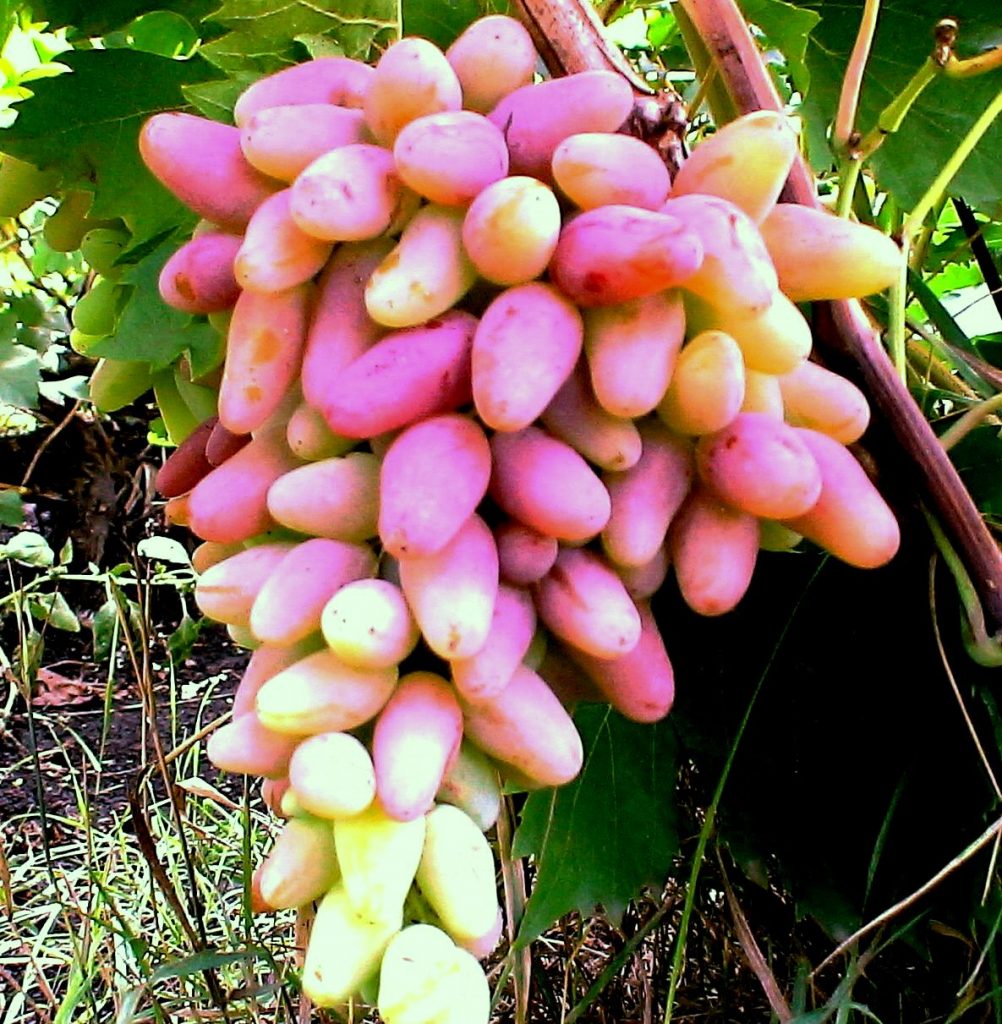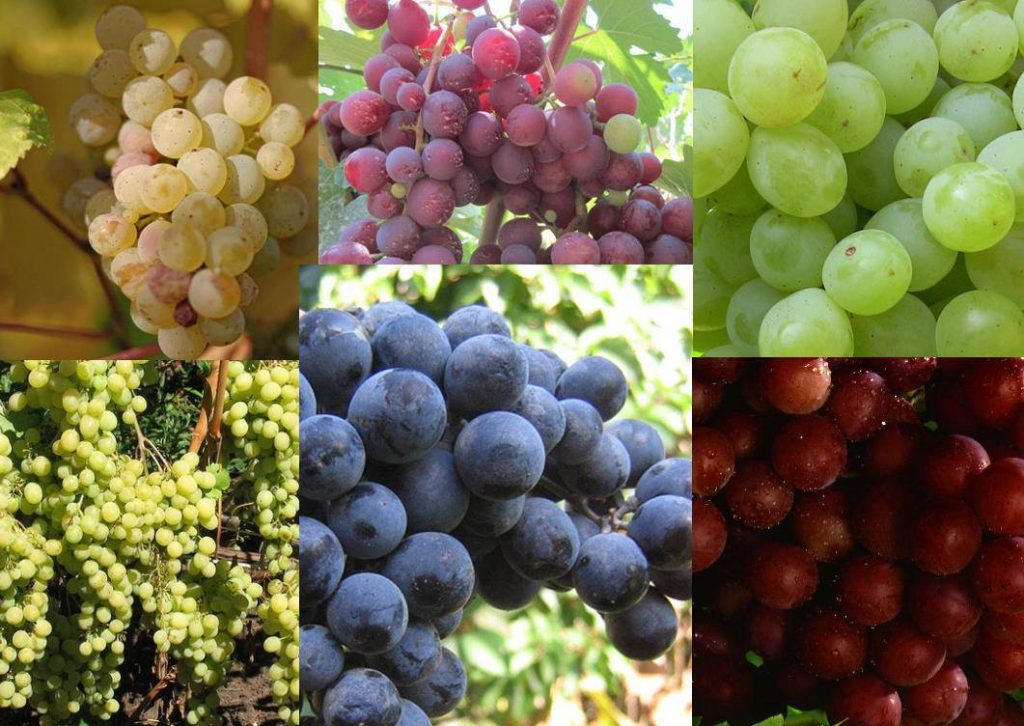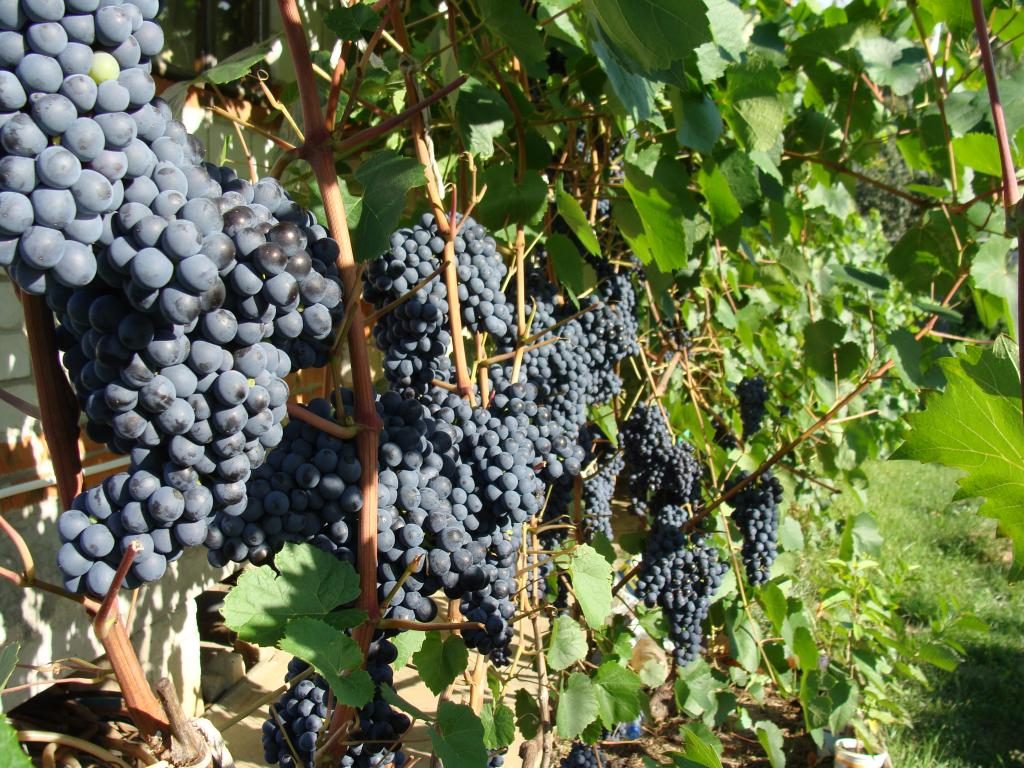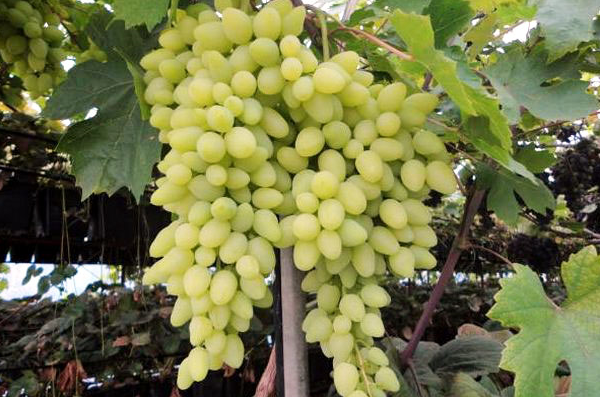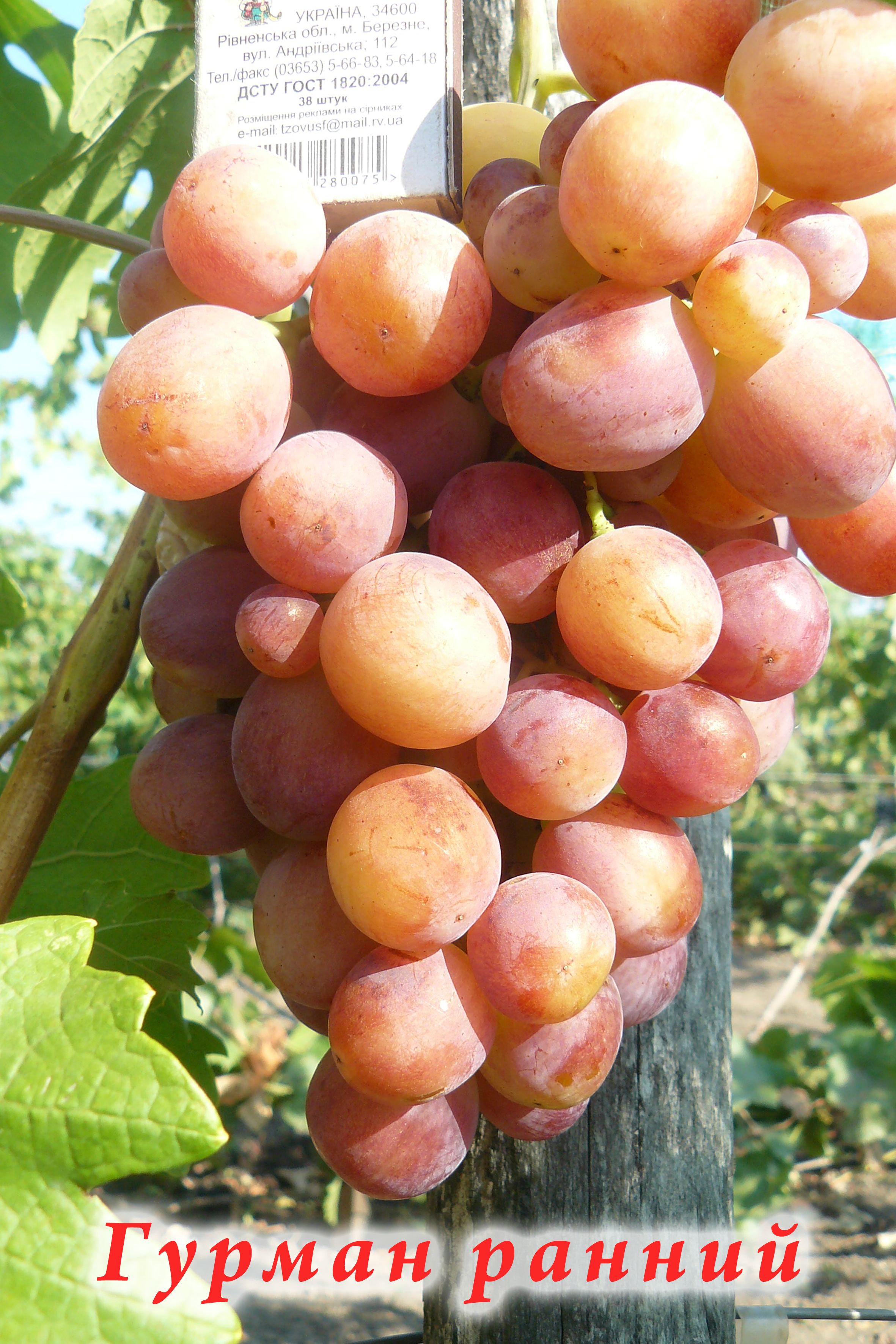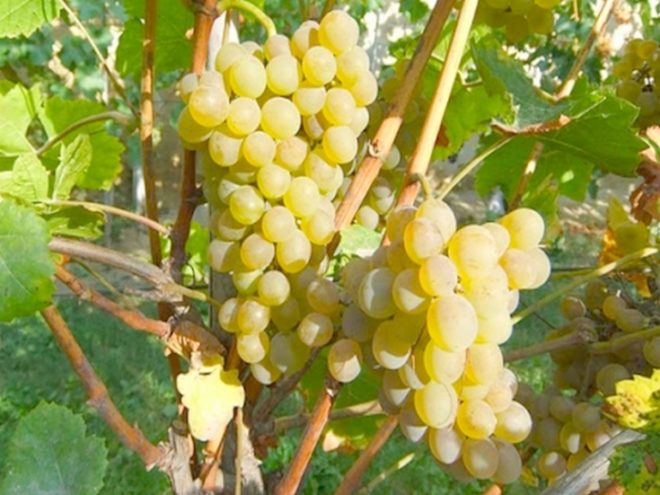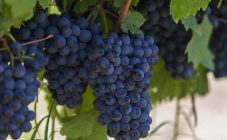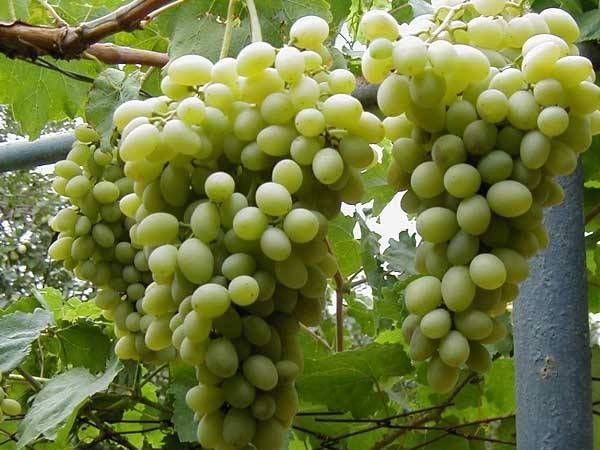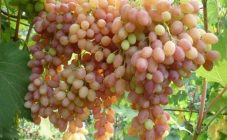Content:
Grapes are the most ancient plant that still remains the favorite and most popular among mankind. When you remember him, pictures pop up in front of your eyes, on which the sun plays with rays, vineyards turn green with huge clusters, on which amber and ruby fruits flaunt. You can learn all about grapes from this article.
History of origin
The cultivation of this culture began as early as three and a half thousand years before our era. This is confirmed by archaeologists who, during excavations, discovered images in old temples of Egypt. Greece also excelled in viticulture. Back in the days of Homer, there was a well-known cult of the god Dionysus.
In those days, when the ice age ended, and continents with a warm climate appeared on the planet, the grapes were divided into three groups:
- European-Asian;
- East Asian;
- American.
Today in nature there are about six hundred different varieties of this culture. Only ten percent is used to produce fruits. Some of them serve as rootstock. Each of the grape species has to adapt to the area in which it grows. The plant has become frost-hardy, some of them tolerate high humidity or drought, depending on the region. They acquire immunity to diseases and pests.
In recent times, man, by his actions, oppresses some of the species and leads to their withering away. During the transportation of varieties from America to Europe, new diseases of grapes were introduced, such as mildew, oidium. A new pest, phylloxera, was also brought. Because of this, many plants died.
Breeders have developed new varieties that feel comfortable not only in the southern, but also in the northern, as well as in equatorial countries. In some areas, grapes are grown in a greenhouse. In Russia, the culture began to grow much later, approximately in the XVI-XVII centuries. The first vineyards appeared in cities such as Putivl, Astrakhan, Kiev. Thanks to academician Pallas, in 1828, at the Nikitinsky court, the Magarach school of viticulture and winemaking was opened.
During the First Patriotic War, vineyards in Russia fell into decay. During the Great Patriotic War, most of them were destroyed. Today, of all the famous vineyards, only Massandra and Abrau-Dyurso remain, which miraculously survived in unfavorable days.
Grape, berry or fruit?
Many people argue: "Are grapes a berry or a fruit?" The fruit of the plant is a ball-shaped or elliptical berry that belongs to fruits. They grow in clusters, on which there may be at least fifteen pieces. In most cases, one bunch can grow up to three hundred grapes.
The color of the fruit is varied:
- Violet;
- crimson;
- the black;
- dark blue;
- yellow;
green; - pink;
- Orange.
To understand this issue, you should find out what the concepts of "berry" and "fruit" mean. The fruits of trees and shrubs are called fruits, berries, or simply fruits. A vegetable is also called a fruit, although it grows in the garden. The word “fruit” is used in everyday speech, while “fruit” is a biological definition. Sometimes berries are also called fruits. But the difference between the concepts is significant.Since the fruit has a juicy flesh and develops directly from the flower, they grow on trees. At that time, the berries grow on a shrub and have a thin skin, small size, juicy pulp and seeds.
Examining the fruit of the grapes, one can see a thin skin, juicy pulp, seeds and small size. Therefore, from the point of view of consumers, in everyday conversation they can be called berries.
What grapes look like
What are grapes? Even a child can answer this question, but few know how grapes grow. The vine is a powerful vine-shaped stem that grows very quickly. Its bark is fibrous, red-brown in color. Vine leaves have several blades with edges bordered by teeth. Their color can be from light to dark green tones with a bronze sheen.
The plant has two types of buds. From some that are vegetative, shoots grow. The latter are intended for fruiting. A fertile raceme grows from the central bud in early spring. The rest of the kidneys that are near it are considered replacement and can wake up if the main one is damaged.
It should be noted that this plant has no wood. Instead, the trunk contains airborne tissues. When pruning a plant, you need to take into account that in the nodes where the inflorescences or antennae are located, there is a diaphragm in the tissues. In places where only leaves grow, there is no diaphragm. In addition, there are grape varieties in which it is completely absent. The tendrils are designed to allow the vine to trail along the supports. But since in order for the vine to grow and have the strength to cling to the support, a large amount of nutrients are needed, those antennae that could not find what to grab onto, the vine drops.
A bunch of grapes grows as a result of the flowering brush, which has a greenish tint of flowers. Their diameter reaches no more than five millimeters. In most grape varieties, the inflorescences are bisexual and tend to self-pollinate. But there are also varieties of culture that need pollinators.
The plant is pollinated in windy weather, while the air temperature should be at least twenty-five, or even thirty degrees. In technical grape varieties, the cluster is dense, in contrast to table varieties, where, on the contrary, it is loose. By weight, one brush can weigh one hundred grams, but sometimes the mass can reach up to a kilogram.
The fruit cluster has a stem and a crest on which the berries are located. The shape of the fruit differs by variety. The pulp of berries is a storehouse of vitamins and nutrients for the human body. By taste, the fruits can be crispy, tender, juicy or jelly-like. Moreover, the latter type of gustatory quality belongs to technical varieties. In kishmishnyh varieties, the fruits have no pits.
A grape bush grows on a single trunk called a stem. It is divided into aboveground and underground parts. The length of the part that is above the ground depends on the variety and shape of the shrub. A root system is formed on the lower part. There are three types of roots. In the upper part, they are scattered, located at the very surface of the soil, below are the lateral ones that go deep down. The depth to which they descend is more than sixty meters. It is this part of the root system that supplies the plant with nutrients and minerals. At the very bottom are the roots, called heel roots, and provide the plant's longevity.
What is the growing season
During the growing season of grapes, all parts of the plant develop actively:
- shoots;
- leaves;
- inflorescences;
- antennae.
It is at this time that the root system is actively functioning in the plant, the leaves breathe and accumulate organic matter. In addition, fruits are formed, grow and ripen.
In this period, there are six phases:
- The first is sap flow. During this period, the liquid actively moves along the vine, and droplets of juice appear at the cut point. The liquid is called soda. Drops on the cuts - crying. This process takes place due to the activation of the cells of the grape root system. It absorbs water and substances useful for plant growth and moves them under pressure throughout the plant. The duration of the phase is from twelve to sixteen days.
- During the second phase, the plant begins to bud. The active development of shoots, leaves, inflorescences, antennae begins. Right now the plant continues to actively develop and at the same time "feed" on minerals, water and starch accumulated in the roots. It begins to accumulate new reserves, produces substances that are necessary for life and development. During this period, you need to periodically loosen the ground to ensure the supply of oxygen to the roots of the plant. They also break off the lower shoots that have formed under the vaccination site.
- The third phase of the plant is the period from the end of flowering and the moment the ovary appears on the bunch. Now the plant needs the largest amount of nutrients. The resulting ovary is already showing the grower for the next harvest.
- In the fourth phase, the fruit ripens process. And the plant begins to gradually fade and stop developing all its parts.
- In the fifth phase, the fruits become fully ripe and take on a natural color. The formation of buds is taking place, which will winter and develop already next year. In this phase of the growing season, the grapes are harvested. This process lasts for a month and a half.
- The sixth phase is the period of the plant falling asleep. After harvest, the leaves of the grapes begin to change color, dry and crumble. The root system begins to actively accumulate starch. The same substance accumulates in other parts of the culture. Thanks to this process, the plant tolerates frost. This phase lasts for a month and a half.
Formation of the first fruits
The first fruits of grapes after planting a seedling can be obtained in four years. Prior to this, the shrub is actively developing, the formation of the crown occurs. Thanks to pruning, the plant begins to grow stronger and gain strength. Throughout this period, it is necessary to carefully look after the plant, do weeding, loosening and timely watering.
If you properly care for the plant, then it can bear fruit earlier. This can happen in the third year of active plant growth. Grapes can discard inflorescences already in the first year of planting, but in order for the fruits to be full during this period, it is best to remove all flowers and wait until next year.
Why grapes don't have fruit
If the grower has not received grapes for several years, the question arises: "Why does not the grape bear fruit?"
In this case, there are several important reasons why fruits do not appear on the bush:
- The planting site was not chosen correctly, and the plant does not like it;
- A large amount of organic fertilizers has been applied to the soil, this reason can be established by fast-growing shoots and large leaves;
- The trimming was done incorrectly, that is, it is trimmed too short. For this reason, there is no room on the plant for the formation of fruits;
- The bushes are damaged by frost. They can damage uncovered grapes.
It should be noted that the plant simply could not be pollinated. Accordingly, the fruits will not appear. Diseases and pests cause a lot of harm.
The most dangerous diseases are:
- gray rot;
- mildew.
Among the pests, the most dangerous are:
- Snail;
- Ticks.
For this reason, berries may also be missing.
How to eliminate the cause of not fruiting grapes
In order for the plant to bring a good harvest next year, it is necessary to determine the reason why the plant does not bear fruit, and to correct the situation in a timely manner.
To do this, you need to adhere to contraindications and apply the following actions:
- Each feeding should be carried out on time in compliance with all norms and dosages;
- Cut off annual stepchildren that prevent flowers from pollinating;
- Some varieties need to be pinched;
- In a dry summer, the vine must be sprayed with water in a timely manner, making a piece of rain;
- Those grape varieties that do not self-pollinate need to be artificially pollinated with panicles;
- Cover the plant in winter to protect it from frost;
- In order for the plant to be clean and bear fruit well, it must be treated with chemicals from diseases and pests.
Grapes are a very sensitive plant, but if properly cared for, they can produce a good harvest. The grower will have to spend a lot of effort or resources to grow it, but ripe and juicy fruits will compensate for all the costs.

